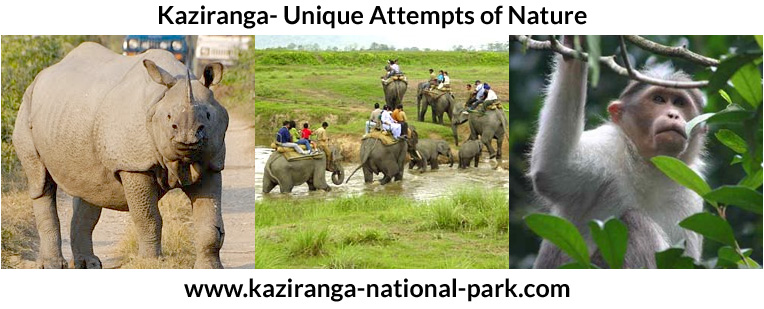- Posted on 20 Mar 2013 10:28 am
When photography is a passion, every subject is ‘just another best’. However, with wildlife as its prominent theme, it is a potent tool of flaring imagination by capturing vivid natural realities. Indian wildlife, which is exhibited in various national parks, sanctuaries and forest reserves, is one major draw. For creative individuals including professionals, the emphatic idea is of clicking life other than human, but maybe more mesmerising and insightful.
Here are some of the best places to take the idea into motion:
Corbett- Grandparent of all Indian National Parks

The adage ‘Old is Gold’ is truer, talking in context of India’s oldest national park. Declared a preserved ecology in 1936 by the attempts of British Jim Corbett, it remains a fantasy for wildlife lovers cum photographers. Located jointly in Nainital and Pauri districts of Uttarakhand, Corbett Tiger Reserve is an opportune place for travellers to capture amazing clicks.
The fauna dwelling on land and water, birds, reptiles and insects, is exquisite. The impression is enhanced by the flora, flaunting trees, herbs, shrubs, grasses, plants, etc. Attributed to the unique geography the reserve boasts, the features of the park also exhibit the Royal Bengal tigers, prime attraction of the place.
The mountainous landscapes, Ramganga River with birds and animals on its bank, forests of Sal, Khair and Sissoo trees, the morning mist, feeding herd of Asiatic elephants, rare jungle cats in motherly mode, etc will present excellent opportunities to be captured in the Camera. Explore and click endlessly.
Ranthambore- The pages from history and nature

Rajasthan is not only a favourite destination of lovers and scholars of Indian history but also of wildlife photographers. The reason is Ranthambore National Park in Sawai Madhopur district. The park used to be a game reserve. The fact later changed into a national park with tiger abundance. Project Tiger is undertaken even here to increase the count of animals in the species and take a good care of their health.
Capturing images is like looking for gems. Ranthambhore Fort marking some of the pages of history or the animals playing ‘hide and seek’ in there can be your subject of photography. The rich landscapes of Vindhya and Aravali and the plateau bound by River Banas and Chambal from north and south respectively, could be another, just as the forests of date, banyan, khair, Coromandel Ebony trees, etc. These are the prime spots of locating wild creatures, animals and birds alike. The checklist would include bear, jackal, hyena, leopards, pythons, antelopes, waterfowl, serpent eagle and many more.
As they try to stay away from the prying humans, chancing upon has to be strategise as a wildlife tourists or photographers with the help of forest guides.
Bandhavgarh- Lucky for sure

Madhya Pradesh is known for a hearty tourism rendezvous and in centre of it is Bandhavgarh National Park jointly located in the district Umaria and Katni. Renowned for the huge tiger density (especially in Tala Zone), the park is among the highlighted places for those interested in wildlife and the whiter counterpart of the exotic species of jungle felines. Due to the high population density of tigers, one is considered unlucky to not encountered even one in this park.
The white tigers are also located in the area, but not as frequently as the Royal Bengal Tigers. Besides them, the biodiversity flaunts leopard, gaur, wild boar, langur, macaque, neelgai, hyena, and many others could be spotted along with different birds, butterflies, reptiles, etc.
As far as the unique geography of the park is talked about, wildlife lovers will have a great time with their high resolution image equipments. The Satpura mountain range with tropical monsoon climate presents excellent opportunities for ace photographs. Moreover, the meadows, valleys, ridges, and some nearby locations can be good themes for an exhibition with Bandhavgarh as theme.
Kanha- The vivid wilderness

Officially referred to as Kanha Tiger Reserve, the Kanha National Park is located in Madhya Pradesh, precisely in the districts of Mandala and Balaghat. If tourists have not been coming here to witness the original site of the plot of the “Jungle Book” by Rudyard Kipling, they must have been convinced by the popularity of the park due to tigers.
The Satpura Hills that spell bounds the visitors in Bandhavgarh also welcomes those coming to Kanha. The vistas of misty meadows of valley and plateau, the sun rising to the horizon and sauntering antelopes in the grasslands can make an enticing portrait that one may like to immortalise through camera. And the deciduous forests also make for an imposing picture for a meticulous third eye (the camera).
As for the four legged, flying and swimming and slithering creature, even a non-photographer will be tempted to stay here forever clicking away whatever he could. The mighty predator tigers are there, as usual but count fox, jackal, leopards, elephants, swamp deer, Indian gaur, black duck,langurs, civets, snakes, etc to be pictured.
Kaziranga- Unique attempts of Nature

Assam and the UNESCO World Heritage site Kaziranga National Park have become synonymous to each other. The park is home for some Bengal tigers but is mainly toured to spot the endangered species of Great Indian One-horned Rhinoceroses. This is what makes it exceptional and unique. But, there is more to this protected ecology that can be an inspiration for the quick shots
River Brahmaputra, Diphlu and Mora Dhansiri have a major role in the biodiversity of the Nature’s playground. The bank of the river and areas nearby certain other smaller water bodies are silent invitation to the animals and birds. This is actually an invitation for the wildlife tourists as well and forgetting the image / motion recording equipment is a blunder.
Monsoons are absolutely avoided but the winter and summer season are prime time when tourists enjoy Kaziranga for its diverse landscapes and creatures residing there.
Insights of all the parks above are just a minor glimpse in the richness of Indian wilds. Record them as best as possible. Such opportunities are rare if one considers the tough itinerary-scheduling for the time culled from busy work life.
Enjoy nature by captivating some candid moments!


